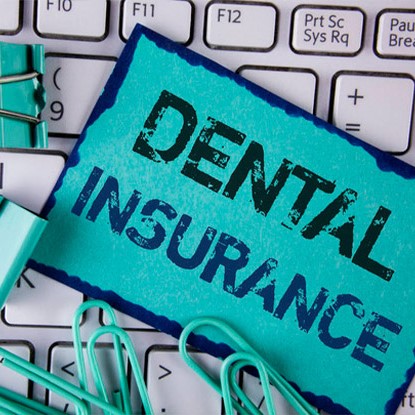Navigating the World of Dental
Claim Form Automation


Unlock the future of dental practice efficiency with our comprehensive guide to dental claim form automation. Streamline operations, reduce errors, and optimize reimbursement with expert insights. Explore now!
A visit to the dentist isn’t something anyone looks forward to, but it’s a necessary part of life. Regular checkups and dental procedures are important for maintaining good oral health, but the process of filing dental claims can be a tedious and frustrating experience for everyone involved.
Fortunately, technology has made dental claim form automation possible, making life easier for both dentists and their patients. In this guide, we’ll explore the benefits of dental claim form automation and how it’s changing the dental industry.
Dental claim form automation is a valuable tool for dental practices looking to streamline their administrative processes and improve the efficiency of handling insurance claims. Transform your dental claims process with ClaimAction by Artsyl.
Book a demo now
Dental claim form automation involves using technology to streamline the process of submitting dental claims. Instead of filling out paper forms by hand, insurance companies and dental offices use specialized software to automate the process. This automation can significantly reduce the time it takes to process claims and reduce the chances of human error.
Dental claim form automation can be applied to various types of dental claim forms commonly used in the healthcare industry. These forms include:

Contact Us for an in-depth
product tour!
Automating these various types of dental claim forms can significantly enhance the efficiency, accuracy, and speed of the claims processing and reimbursement process for dental providers, insurance companies, and patients alike.
Boost dental practice efficiency! Artsyl ClaimAction streamlines your dental claims workflow, freeing up staff to focus on patient care. Elevate your practice’s productivity now.
Book a demo now
Dental claim form automation involves the use of technology, such as specialized software and artificial intelligence, to simplify and streamline the process of submitting, processing, and adjudicating dental insurance claims. Here’s how dental claim form automation typically works:
RELATED: Medicare and Medicaid Claims Processing
Many dental claim automation solutions are designed to integrate seamlessly with existing dental practice management software, making it easy to incorporate automation into daily workflows.
Overall, dental claim form automation significantly reduces the manual effort required to process claims, minimizes errors, accelerates reimbursement, and enhances the efficiency of dental insurance claim management for both dental providers and insurers.

Ensure you capture every eligible dollar with Artsyl ClaimAction. Our intelligent automation identifies missing information and coding errors, leading to higher reimbursements. Start maximizing your revenue today.
By automating the dental claim process, dental professionals can enjoy several benefits, including fewer errors, faster claims processing, and reduced paperwork. Patients can also benefit from automation by having their claims approved and processed more quickly.
More efficient claims processing can also save money by reducing the need for manual intervention and reducing mistakes that could cause costly claim denials.
RELATED: What Is HCFA in Medical Billing?
Since dental claim form automation can simplify and streamline the claims process, it’s quickly becoming an industry standard. More and more dental offices are adopting this technology to improve the customer experience, reduce the time it takes to process claims, and reduce costs.
In addition to improving the claims process, dental claim form automation can also improve overall communication between patients, providers, and insurance companies since electronic communication is faster and more accurate.
Dental claim form automation is safe. Since it eliminates manual data entry and reduces the chance of errors, it’s actually a more secure method of claim submission. With less manual intervention, there’s less chance of accidental data exposure or unauthorized access.
Dental practices and insurance companies that use automated claim submission can also have extra protection against unauthorized data access via built-in security features.
Eliminate claim rejections and denials with Artsyl ClaimAction’s error-checking capabilities. Get paid faster and avoid the hassle of resubmissions. Secure your revenue stream with us.
Book a demo now
Dental claim form automation can lead to several cost savings for both dental practices and insurance companies. Here are some of the expected cost-saving benefits:
RELATED: Accelerating Medical Claims Processing
It’s important to note that the actual cost savings may vary depending on the size of the dental practice, the volume of claims processed, the level of automation implemented, and the specific challenges faced by the practice.
However, in general, dental claim form automation is recognized for its ability to generate significant cost efficiencies and financial benefits over time.
Dental claim form automation is transforming the dental industry. By automating the claims process, dental professionals can improve efficiency and reduce costs, while patients can enjoy a smoother and faster claims experience.
As automation technology continues to evolve, both patients and providers stand to benefit from a more streamlined dental claims process that’s faster and more secure than ever before.
Speed up claims processing and minimize delays, improving the patient experience. With Artsyl ClaimAction, you’ll impress your patients with prompt and accurate claims handling. Elevate patient satisfaction now!
Book a demo now
Dental claim form automation is the process of using technology, such as software and artificial intelligence, to streamline and simplify the submission, processing, and adjudication of dental insurance claims. It eliminates manual data entry and reduces paperwork, making the claims process faster and more accurate.
Dental claim form automation typically involves the use of specialized software that can extract information from dental claim forms, validate it for accuracy, and automatically enter it into the insurance company’s system. This technology uses Optical Character Recognition (OCR) and data extraction techniques to achieve automation.
Dental claim form automation offers several benefits, including faster claim submission, reduced errors, improved accuracy, quicker claim processing, reduced administrative costs, and enhanced efficiency in managing insurance-related tasks.
Yes, reputable dental claim form automation solutions prioritize security and compliance with healthcare regulations, such as HIPAA in the United States. They use encryption and other security measures to protect patient information and ensure compliance with privacy laws.
Yes, many dental claim form automation solutions offer integration options with existing practice management software. This allows for seamless data flow between systems, making it even more convenient for dental practices.
Yes, many dental claim form automation systems support electronic claims submission (EDI) to insurance companies. This enables dental practices to submit claims electronically, further speeding up the reimbursement process.
Dental claim form automation can be used for various types of dental claims, including routine check-ups, cleanings, restorative procedures, orthodontics, and more. It is adaptable to various claim types and codes.

Yes, some training may be necessary to ensure that dental practice staff can effectively use dental claim form automation software. However, many solutions are designed to be user-friendly and offer training and support resources.
Yes, some dental claim form automation solutions offer features for tracking the status of claims and automating follow-up processes. This ensures that claims are processed promptly, and any issues are addressed efficiently.
A10: Yes, dental claim form automation can result in cost savings for dental practices by reducing administrative expenses, minimizing claim errors, and speeding up reimbursement from insurance companies.